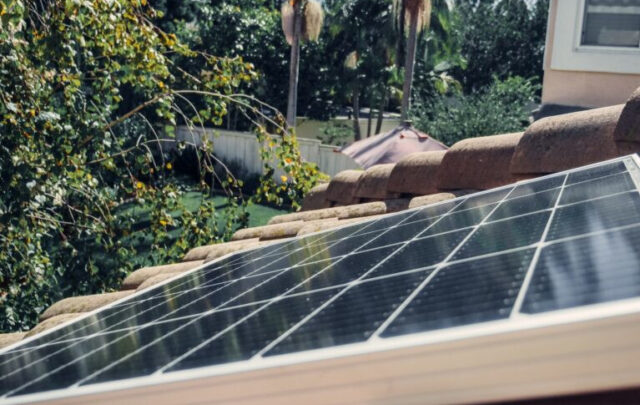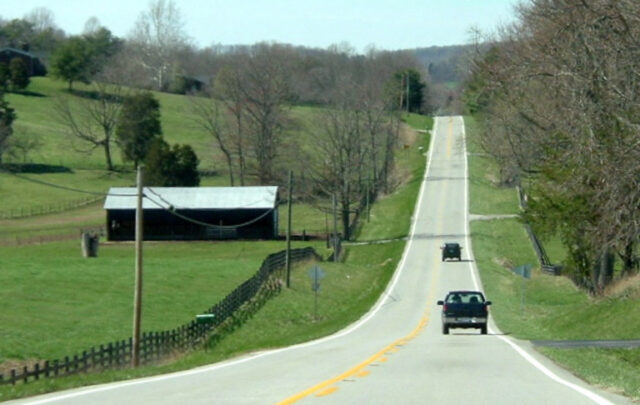Ed. note: You can read Part 1 of this series on Resilience.org here and Part 2 here.
A couple of posts back I introduced a diagrammatic snapshot of where Making Permaculture Stronger has arrived after over two years conducting two in-depth inquiries into the design process understandings at permaculture’s core.
The diagram contains a tentative framework for understanding how different kinds of design processes are constitutionally more or less able to enhance life.1 It has two axes. The last post explained the y-axis. There I laid out the difference between assembling, partitioning, and transforming as three distinct ways to think about how whole-part relations can be understood whenever we do stuff or create stuff.
Here I’ll move to the x-axis and review the difference between fabricating, hybrid, and generating as three different ways that designing (or thinking) and implementing (or doing) can be related whenever we do stuff or create stuff.
Long-term readers of this blog will have seen this three-way distinction before, but I wanted to have a fresh go at presenting it for readers who might only be reading this current four-part series (which is being reproduced on at least one other site).
We’ll start with fabricating, then consider generating, then come back to the hybrid middle ground.
Fabricating (Master Planning)
 A fabricating approach completes an up-front design or master plan and only thenstarts implementation.
A fabricating approach completes an up-front design or master plan and only thenstarts implementation.
Here are a few early examples of fabricated master plans I played a leading role in:
fabricated assembly
fabricated partition-then-assembly
Aren’t they pretty! They also bring together thousands of mistakes in the sense that many of these decisions would be made much better in sequence and in context as the site was being developed, rather than being dreamed up and crammed into a pretty picture up front. This is not to suggest that there is not a time and place for such pictures, by the way (something we’ll discuss more in the next post). It is to say we get in trouble when we forget what they are – diagrammatic guesses that can never, ever capture or respond to all the new details that only and inevitably emerge as soon as you start to intervene in any complex system or ecosystem.
Ben Falk has put this very nicely:
It’s easy to just take paper too seriously and have too many decisions based on what is or isn’t on a piece of paper. It can be great to guide overall decisions and to know starting points and know general steps but if it’s not coupled with the active hands on that constantly changes what’s on that paper master plan/site design it can be very misleading and very dangerous.
Generating
A generating approach focuses on a rigorous process for repeatedly honing in on the best next step then taking it. Here we generate a design layout or pattern in the very process of actively modifying whatever we are working with. Any design sketches are at best servants of the way things are unfolding on the ground, rather than upfront masters (as in master plans) where pre-cooked guesses are imposed.
Though I first learned about generating from Christopher Alexander, I was subsequently delighted to discover that permaculture co-originator David Holmgren had been exploring something similar for many decades. Check out David’s 1994 words where he contrasts master planning (fabricating) with strategic planning (which is something very similar to what we’re calling generating).2
Master planning, (where detailed plans are implemented producing a final fixed state which is a copy of what is on paper) has been discredited in the planning profession due to its failure to deal with complex evolving systems…
In strategic planning, the emphasis is on processes of development which are on-going and respond to changing circumstances. It recognises that complex systems can never be completely described, predicted or controlled but that forces can be identified and worked with to develop a more balanced and productive system. Most importantly, strategic planning can help pinpoint the initial step to get the desired processes moving without later having to undo what has already been done. (David Holmgren, 1994, p. 21)
In a master planning or fabricating approach, it is extremely hard, if not impossible, to avoid making premature decisions and then imposing them on reality. You thereby end up taking steps that are not the best suited to what is actually going on at that stage in the unfolding process.
In a generating process, on the other hand, we move from imposing on reality to unfolding out of reality. As a result, the decisions we make along they way are non-arbitrary. They are made at the right time in the presence of the right information meaning we have at least a chance of getting them right. When by fabricating we make our decisions before we even start, it is like we are turning on this massive tap of arbitrariness where the quality of the outcome rests on the nature of the guesses we made at the start.3
Furthermore, if we seek to mimic natural process, nature generates – it never fabricates! As a result, an authentic generating process is much better able to connect in with and enhance life. It just. makes. sense.
Here’s a few images and a recent bit of drone footage from the 10-acre Mayberry Woodend project in Victoria, Australia, where the lovely residents and I have been experimenting with a generating process. In terms of our diagram this was actually an example of generative transformation – something I’ll explore and explain further in the next post.
This next diagram shows all we drew before we started to ground-test and do – a diagram that includes only what we’d decided was the best next step – a new driveway: Here a photo of the works underway:
Here a photo of the works underway:
and the patterns that were generated, here in a photo…
…here in a video:
The point I want to make is that not only are functionally and aesthetically harmonious layouts achievable without drawing upfront plans, what emerges is in my early experience so much better (as in more functional, more connected, and more beautiful) that what could have been captured in any upfront plan.
For the record, I am not saying that there is no place for drawing on pieces of paper or computer screens. Indeed, as I’ve shown above, part of the planning process for the driveway in the above video was drawing possible driveway layouts on paper. But the focus was honing in on and crash testing the best next step, not creating a ‘plan’ to impose.
Hybrid
The hybrid approach is now easy to explain. It mixes together equal parts fabrication and generating. In particular, it involves completing a high-level, broad strokes concept plan ahead of starting to implement, but then lets all the details fall out of the creating/doing/implementing process as it rolls forward.
My friend and renowned ecological designer Dave Jacke describes what I’m calling a hybrid approach well in this personal communication:
In reality, I design the overall pattern, implement key pieces after designing them, then redesign as more parts of the system get implemented. I have never had a client where I could implement all at once as a grand expedition! It’s always been piecemeal implementation with design along the way, responding to changes in goals, site and emergent reality as the design goes into place. But having a big picture view, that is, an overall site design to at least a schematic level, is critical to help one work out where to begin the implementation. Then I would design the relevant patches, including their site prep and implementation strategies, and then proceed on the ground. Staking out is a critical part of the process! Field testing the design in reality, essentially (from a personal email communication received January 28, 2017)
Here’s a simple example of a rough concept design I sketched with my parents for the layout of their new house garden:
Here’s us (my dad and I, although my mum was right there too!) getting to it and figuring out the details with rakes and shovel rather than pencils and computer mice:
and here’s the resulting layout from above…
Winging it
You’ll note a little asterisk in the diagram next to the generating label.
here’s what it says:
Not to be confused with winging it (ill-considered random/ haphazard implementation generating no coherent design)
I mention this to ward off the misunderstanding that a generating process is somehow less rigorous, logical, evidence-based, or documented/documentable than a fabricating approach. In my experience it is much more of all these things!
It is also harder work. You cannot just draw a nice picture, hand it over to the implementation team, then slack off as the territory gets rudely affronted with your map. You need to stay fully engaged as you make changes, immerse in the outcome, and figure out the best next move from there.
Point made. Generating is a world apart from winging it.
From Less to More Life Enhancing
An authentic generating process is infinitely more able to honour and enhance the life in a given system than a fabricating process (and obviously a hybrid process its in between). This is an important point I want to flesh out a little more.
Life and adaptation are not separable concepts. In other words, all life involves, requires, maybe even is adaptation. To enhance life, therefore, is to enhance adaptedness. Enhancing adaptedness, by the way, is another way of saying enhancing fitness – fitness in the sense of the fitted-ness of a whole’s parts to each other, and the fitted-ness of that whole to the larger wholes it sits within. The moment an organism doesn’t fit its environment, for instance, it doesn’t live.
Now here’s the thing. Adaptation cannot be fabricated or master planned, period. I believe it to be an essential truth that adapted systems can only emerge or be generated iteratively, in an ongoing dance between a system’s form and its context.
This is why in the diagram we are here exploring, I contend that a generating process is more able to enhance life than a fabricating process.
I’m going to let Christopher Alexander (2002) drive the point home:
…there is a fundamental law about the creation of complexity, which is visible and obvious to everyone – yet this law is, to all intents and purposes, ignored in 99% of the daily fabrication processes of society. The law states simply this: ALL the well-ordered complex systems we know in the world, all those anyway that we view as highly successful, are GENERATED structures, not fabricated structures.
The human brain, that most complex neural network, like other neural networks, is generated, not assembled or fabricated. The forests of the Amazon are generated, not fabricated. The tiger, beautiful creature, generated, not fabricated. The sunset over the western ocean with its stormy clouds, that too is generated, not fabricated. (p. 180)
The significance of generated structure lies in the concept of mistakes. Fabricated plans always have many mistakes — not just a few mistakes but tens of thousands, even millions of mistakes. It is the mistake-ridden character of the plans which marks them as fabricated — and that comes from the way they are actually generated, or made, in time. Generated plans have few mistakes (p. 186)
If an [human] embryo were built from a blueprint of a design, not generated by an adaptive process, there would inevitably be one thousand trillion mistakes. Because of its history as a generated structure, there are virtually none. (p. 188)
Summary
I have shared three ways in which designing and implementing can be related inside any creation process: fabricating, generating, or a hybrid including bits of both.
I have shared how I think this distinction matters in that only the generating and certain instances of the hybrid approach are able to deliver on permaculture’s aspiration to partner with and enhance life in whatever contexts it is applied.
In the next post we’ll zoom out and consider the diagram as a whole and various ways it can be usefully employed in understanding, practicing and teaching permaculture design process.
References
Holmgren, David. Trees on the Treeless Plains: Revegetation Manual for the Volcanic Landscapes of Central Victoria. Holmgren Design Services, 1994.
Endnotes
- Where there is a clear assumption on my part that permaculture is in essence very much about enhancing life and hence ought to be interested in always getting better at it
- David learned strategic planning from his second great mentor, Haikai Tane
- Keeping in mind that “plan” is always a euphemism for “guess”















